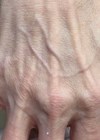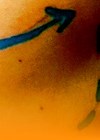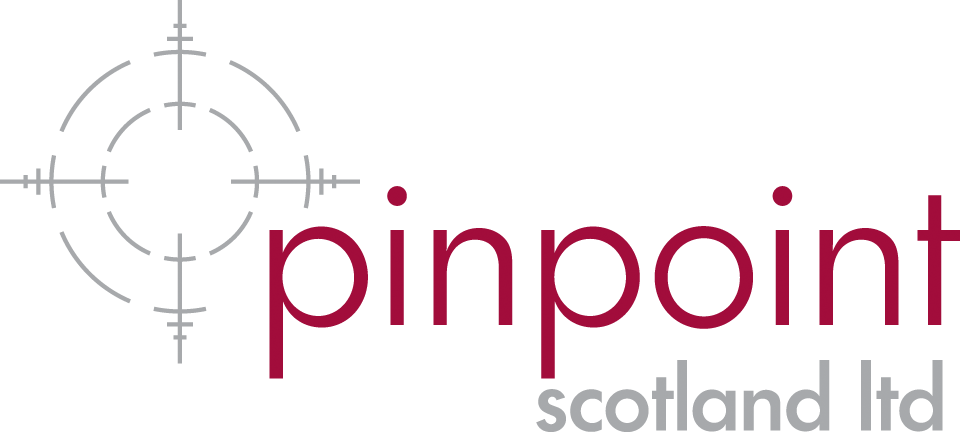This article has been verified for CPD. Click the button below to answer a few
short questions and download a form to be included in your CPD folder.
Introduction and background
This article offers an objective analysis of a new class of injectable biostimulator: polynucleotides (PNs). Many studies explain what PNs are. One such study that is highly quoted is by Mariarosaria Galeano, et al. [1], in which we find the following:
“Polydeoxyribonucleotide (PDRN) is a DNA-derived drug from Oncorhynchus mykiss (salmon trout) or Oncorhynchus keta (chum salmon) sperm with molecular weights between 501–500KDa. The chemical structure of PDRN consists of a low molecular weight fraction of DNA, composed of a linear polymer of deoxyribonucleotides with phosphodiester bonds in which the monomer units are represented by purine and pyrimidine nucleotides. These polymeric chains are coupled to form a steric structure defined as a double helix. The monomer unit of the PDRN chain is the deoxyribonucleotide and it is made up of three components: sugar pentose, phosphoric acid, and a purine or pyrimidine base that is connected to the pentose in position 1 through a beta-N- glycoside bond.”
It is notable that the molecular weights (MWs) are between 50–1500kDa which is an extremely wide range. Different MWs of various molecules can produce different effects. For instance, lower MW hyaluronic acid (HA) can be pro-inflammatory [2], unlike the higher MW HA. There is no information relating MW to clinical effect in PNs.
The source of PNs
The source of PNs is fish sperm, such as that of salmon or trout. Injection of foreign species’ DNA into humans has never played a part in human physiology or evolution. For example, human beings have no receptor for a polynucleotide chain. This should make sense for the reason that DNA does not exist as a free-floating macromolecule in the extracellular matrix.
Potential mode of action
Polynucleotides must be changed into other things in order to provide some kind of change. This is again admitted in the paper: the mechanism of action must be using a “salvage pathway.” For those unaware of the term, it implies that the PN is being broken down into constituent parts to then make other things. This is a highly important point.
In order to break anything down in the body (or build something), we are using energy. This means that as soon as PNs are injected, they must be broken down using energy. Therefore, we are in an energy deficit just by having something there that is not normally present. So, what are the breakdown / catabolic products produced?
The same paper suggests the following: “sugar pentose, phosphoric acid, and a purine or pyrimidine base.” Firstly, sugar as a metabolic substrate is not optimal for human beings and we can work this out by way of understanding the concept of ketosis and what happens when humans utilise non-sugar products as metabolic substrates and we observe the effects of it on mitochondrial function [3].
Secondly, phosphoric acid can be converted into inorganic phosphate. This is common knowledge in the realms of chemistry / biochemistry. This would have beneficial effects on the surrounding cells as inorganic phosphate is readily used to re-phosphorylate adenosine diphosphate (ADP) into adenosine triphosphate (ATP) in order to provide energy. This is something that happens as part of the oxidative phosphorylation process inside mitochondria. On this basis, it is easy to see why some cell function benefits exist from PNs. But how much more benefit would there be if we didn’t also use up ATP in catabolising the macromolecule in the first place?
Finally, we have the purine and pyrimidine bases. These bases can be converted into uric acid [4]. Under normal conditions the production of uric acid is in balance with uric acid disposal [5]. Uric acid may act as an immune system stimulant – urate is a potent antioxidant, it helps to maintain blood pressure in a salt-poor environment and it may be beneficial in some diseases of the central nervous system, probably due to its antioxidant properties [6]. However, deposition of uric acid in various parts of the body leads to the development of gout, a common, painful rheumatic disease [7].
The potential negative effects on mitochondrial function may not be so commonly known [8]. If PNs offer improvement in cell function, how much more cell function could we observe without ATP being used up to catabolise the macromolecule, and without uric acid negatively feeding back into mitochondrial function?
This question is why it must be compared appropriately with other products on the market. And how good is it really at improving cell / tissue function?
If we are continuing with the same Galeano paper [1], we have some context of the mechanism of action of PNs / PDRN:
“It is likely that PDRN is cleaved by active cell membrane enzymes, providing a source for purine and pyrimidine of different tissues. All these favourable effects on cell proliferation enhancement appear to be mediated by the salvage metabolic pathways and by the activation of adenosine receptor A2A. The wound healing properties of PDRN might be the consequence of the stimulation of the altered cell-cycle machinery.”
In other words, we do not know exactly the mechanism of action and this must be emphasised. Other papers offer some insight that may go slightly further. They suggest that the wound healing effect of PDRN is mediated by the stimulation of adenosine A2A receptors and that there is evidence through experiments using DMPX which is a selective adenosine A2A receptor antagonist [9,10]. We also know that the adenosine receptors are notably expressed on many cellular components of the wound healing process, for example, neutrophils, macrophages, endothelial cells, and fibroblasts [11]. Does this offer us a full explanation of the mechanism of action though? Still, the answer is no.
Decades of research
Decades of research have gone into polynucleotides with countless papers published. However, we are still unsure of the causal mechanism of action. We can have, at most, an association or correlation. Our lack of understanding relates to the catabolic processes of PNs and the multiple pathways for each catabolite.
Experimental studies
Returning to Galeano’s paper [1], we can see that a lot of the evidence referenced in PNs is in vitro. When we are working with a product whose exact mechanism of action is unknown, in vitro studies offer a limited insight, thereby bringing down evidence quality to some extent. Many of the studies quoted in the analysis also did not have an HA control, when we know that HA has similar wound healing qualities for a very long time. This is an appropriate control or comparison to use due to the known biological activity it has in aesthetic use and is applicable to clinicians.
The same analysis also showed: “Systemic administration of this drug enhanced burn wound re-epithelialisation and decreased time to final wound closure.” However, no mention of actual time difference or statistical significance was given. Further to this:
“[…] in a large double-blind randomized controlled trial (RCT study 216 diabetic patients with Wagner grade 1 or 2 ulcers were assigned to receive placebo (number 106) or PDRN (number 110) for eight weeks. The drug was injected daily by intramuscular (IM) route for five days / week and by perilesional route two days / week for eight weeks.”
How appropriate is five-day / week use in day-to-day clinical practice for end-users? Or even IM administration? How are we able to we infer the aesthetic use of a product when it is needed five-days / week for multiple weeks? These data points must be viewed in this way if we are to translate research into useable ideas for clinical practice. Five times weekly IM injections for multiple weeks are highly unreasonable for a clinician to provide in practice or for a patient to attend.
Safety and efficacy
To probe further into PNs’ ability to provide cell function improvement, a highly quoted meta-analysis has been carried out by Mah Soo Kim, et al. [12]. This paper has been cited by Galeano as showing PNs to have a “very good safety profile in several clinical trials” [1]. However, an objective view of this meta-analysis is of major interest.
Only five RCTs were eligible for analysis. For these five, “predefined primary outcome was Visual Analogue Scale,” which means that the assessment was primarily done subjectively as opposed to with quantitative objective data. Furthermore, it was found that:
- “There was no significant difference in pain after four months.
- No significant differences were seen in function (KOOSand KSS) scores between the PDRN and HA groups (all p> .05 at all time points.
- There was no significant difference in adverse events between 2 groups.
- The intra-articular use of PDRN was similar in function to HA.”
With such conclusions one could question whether it’s actually the HA doing the bulk of the work for cellular improvement. In addition, we should ask if it is appropriate to use a paper such as this to make the conclusion that PNs have a “very good safety profile in several clinical trials.” Especially when all studies used in the analysis used weekly injections – contrary to PNs manufacturer recommendations of two weekly treatments. One study [13] didn’t have a group receiving PNs on its own – how can changes be attributed solely to PNs? Three studies had an admitted “high bias risk.” Inconsistency is admittedly present amongst all studies for randomised sequencing, allocation concealment, participant blinding, assessor blinding. No studies discuss the type of HA used which is crucial as some can be pro-inflammatory, and others can be anti-inflammatory, as already discussed here.
In vitro studies
The findings here are echoed by another highly cited paper [14] that studied the effect of PNs on osteoarthritis: “However, the specific mechanisms underlying the effect remain unclear.”
The study used a “cell model” “in vitro” as opposed to real patients. When we don’t know how these products work, we can only gain limited insight when we don’t observe them in living tissue.
There was no control against HA. Furthermore: “Being a naturally occurring pure form of DNA polymer in humans” – salmon sperm DNA does not occur naturally in humans; therefore, this statement is highly questionable.
A “decrease in cell viability was observed” due to factors such as “hindered nutrient passage, and exerted external stress on the cytoskeleton.” This simply admits that a lack of ideal response was seen when PN treatment was used.
Animal studies
To allay the limitations of in vitro models, Mi Yu and Jun Young Lee [15] pushed the testing of PDRN into a mammal study.
However, Rats were used instead of humans and the control was no active ingredient at all which does not represent the plethora of choices a clinician has when looking on the open market. The rat subjects again can only offer limited insight because a different species may react to different types of DNA injections. The treatment consisted of daily injections which is completely unreasonable in day-to-day clinical practice for patients to attend.
Granulation tissue thickness score of the treatment group was significantly higher than that of the control group on days five and eight only. This suggests that the effect is slow and only after daily injections can something start to be seen:
Furthermore, “No significant differences were noted in the epidermal and dermal regeneration scores between the two groups” and “Injection of PDRN induced a higher amount of VEGF production on days two and five in the Tx group; however, this was not statistically significant.” These findings should raise a need to intensely question the use of PDRN in a context such as this. In fact, it took eight days of constant injections to produce “a significant increase of VEGF production in the treatment group” as reported by the assessors.
In order to try and significantly show the benefits of PDRN, in 2017 a study looking at how PDRN can heal bisphosphonate related osteonecrosis of the jaw (BRONJ) was carried out [16]. Again, rats were used instead of humans. Crucially, they were given 8mg/kg. This literally translates to an average 70kg human requiring 560mg. With each syringe of PNs being sold in 1ml sizes, that means a clinician would need 560 syringes per treatment session with this protocol. On top of that, the protocol required twice weekly treatment for 20 weeks.
Adding to this, when testing for bone volume recovery, “three concentrations of PDRN (2mg/kg, 4mg/kg and 8mg/kg) treated rats after animal test for 280 days.”
So, at the top dose of 560 syringes per day for a 70kg human, you would need to maintain this protocol for 280 days. Once again, detailed analysis of these studies shows us insight into how we may or may not be able to translate research into day- to-day clinical practice and how useful the studies and products might be.
It is often stated that the combined use of PNs act synergistically on the outcomes of treatment when used in combination therapies. One such study that is quoted to this end is by Kang Lip Kim, et al [17]. This study aimed “to examine the synergic effects of PDRN through extracorporeal shock wave therapy (ESWT) on atrophied calf muscles in immobilised rabbit models” – once again, non-human subjects were used.
Muscular atrophy is highly dependent on amino acid levels which can interact with mTORC1. Therefore, what’s the follow-up on these rabbits after the active treatment was finished? How long did the effect last? These questions remain unanswered.
In this study, 0.7ml was used for 3.3kg (average) rabbits. This equates to roughly 0.2ml/kg. An average 70kg human would therefore need 14ml.
The study’s comparison of the regenerative effect of clinical parameters comparing PDRN to shockwave therapy showed PDRN only gave just over or just less than 2% improvement across all categories. This was at the equivalent dose of 14 syringes for a human being every week of the test.
In summary, papers quoted by manufacturers of PNs purporting their safety and efficacy show no proof of full mechanism of action, have limited findings from the non-human and in-vitro trials, and also show a limited improvement at best, whether used solely or in combination treatment.
The question of being ‘natural’ in society now is often asked – injecting foreign sperm products into us would be hard to justify in this context for any clinician or patient. As well as this, the actual skin- improving qualities of PNs must also be studied. In order to begin analysing this aspect of PNs, one must have a deeper understanding of proteomic anatomy than what is displayed on conference stands and promotional videos. To say that product ‘X’ stimulates collagen is not helpful: there are 28 types of collagens coded by 42 genes found, so far, in the human body [18].Increasing some will increase the ease of cancer to metastasise [19]. Increasing others will have an inhibitory effect on certain cancers [20]. Some types are found in the skin and others are not dermal constituents; some can be either extremely easy or difficult to produce. For instance, up to 90% of the body’s collagen is type 1. This means it is produced in vast quantities and with (relative) ease. It is involved with type 3 collagen in wound healing and scarring.
Type 1 and 3 collagens lie in a basket- like weave within the dermis [21]. They do not traverse the two skin layers in a vertical manner. They are primarily responsible for the bio-mechanical properties of the skin in terms of strength and mobility. They allow and limit stretching of the skin, whilst another fibrillar but non collagenous protein, elastin, is responsible for the elastic recoil of the stretched skin.
Between the dermis and the epidermis is the dermo-epidermal junction (DEJ). This area consists of collagens 17, 4 and 7 [22,23]. They form a vertical complex that physically attaches the epidermis to the dermis like natures velcro.
The vital importance of collagens 17, 4 and 7 is apparent when considering blistering diseases of the skin – these collagens are essential for maintaining skin integrity. To visualise this, one could consider a rather rudimentary example: a burger. The patties would be types 1 and 3. Increasing these doesn’t make the burger compact. However, putting a cocktail stick through the whole burger keeps everything tight such that a bite will not cause any layer to move out of position or slide out onto the plate while eating. The cocktail stick represents types 17, 4 and 7.
The roles of the various skin collagens are specific and different and yet they are all interconnected. Type 7 collagen forms the anchoring fibrils which hold the DEJ to the type 1 and 3 dermal collagens. So long as the molecaulre structures are intact, stretching of the dermis is matched with a comparable stretching of the epidermis and DEJ. When the genes coding for type 7 collagen are absent or defective and anchoring fibrils are not functioning, dermal stretching will result in epidermal separation and blistering.
Final comments and questions
When looking at the effects of PNs it is important to clarify with the manufactures which types of collagen can be generated in the skin. Posing this question seems to give the same answer every time: 1 and 3. Some may say they can give “a bit” of type 4 and 7, but the lack of quantification is again not tenable in clinical use [24,25].
The fact is that there are very few products that can physiologically generate all he specific types of skin collagens required as well as elastin and fibronetin.
Elastin is something that we can explore in the context of PNs as well. Age-related loss of skin elasticity is primarily related to solar or senile elastosis. This is when the elastin content of the skin decreases. It is notable that such skin is also relatively thickened suggesting a decline in the amount of the skin “tightening” collagens. However, just like the “tightening“ types of collagen (17, 4 and 7), elastin is extremely difficult to produce and is rarely quantified.
Staunch defenders of PNs may point to non-neocollagenic benefits such as anti- inflammatory and angiogenic properties to name just two. However, this is far from unique and has been explored in detail in the first portion of this article.
The following is a series of possible questions to ask of PN manufacturers with regards to the effects on skin structure and function:
- Every product generates collagen 1 and 3, but the integrity of the skin comes mainly from 17, 4 and 7 – can you produce any of these? If so, how much?
- If you can’t produce 17, 4 and 7, how does your product improve skin structure and function?
- What are the clinical risks of using foreign species’ sperm derivatives for injection into the human body?
- What are the molecular weight of your PNs and how does molecular weight affect results / cell activity?
- Can you produce elastin? If not, what is the postulated mechanism?
References
1. Galeano M, Giovanni P, Natasha I, et al. Polydeoxyribonucleotide: A Promising Biological Platform to Accelerate Impaired Skin Wound Healing. Pharmaceuticals (Basel) 2021;14(11):1103.
2. Litwiniuk M, Krejner A, Speyrer MS, et al. Hyaluronic Acid in Inflammation and Tissue Regeneration. Wounds 2016;28(3):78–88.
3. Walton CM, Jacobsen SM, Dallon BW, et al. Ketones Elicit Distinct Alterations in Adipose Mitochondrial Bioenergetics. Int J Mol Sci 2020;21(17):6255.
4. Barr WG. Uric Acid. In: Walker HK, Hall WD, Hurst JW (Eds.). Clinical Methods: The History, Physical, and Laboratory Examinations 3rd edition. Boston, USA; Butterworths; 1990:c165.
5. Chilappa CS, Aronow WS, Shapiro D, et al. Gout and hyperuricemia. Compr Ther 2010;36:3–13.
6. Pillinger MH, Goldfarb DS, Keenan RT. Gout and its comorbidities. Bull NYU Hosp Jt Dis 2010;68:199– 203.
7. Halabe A, Sperling O. Uric acid nephrolithiasis. Miner Electrolyte Metab 1994;20:424–31.
8. Sánchez-Lozada LG, Lanaspa MA, Cristóbal-García M, et al. Uric acid-induced endothelial dysfunction is associated with mitochondrial alterations and decreased intracellular ATP concentrations. Nephron Exp Nephrol 2012;121(3-4):e71–8.
9. Montesinos MC, Gadangi P, Longaker M, et al. Wound healing is accelerated by agonists of Adenosine A2 receptors. J Exp Med 1997;186:1615–20.
10. Seale TW, Abla KA, Shamim MT, et al. 3,7-Dimethyl- 1-propargylxanthine: a potent and selective invivo antagonist of adenosine analogs. Life Sci 1988;43:1671–1684.
11. Montesinos MC, Desai A, Chen JF, et al. Adenosine promotes wound healing and mediates angiogenesis in response to tissue injury via occupancy of A(2A) receptors. Am J Pathol 2002;160:2009–18.
12. Kim MS, Cho RK, In Y. The efficacy and safety of polydeoxyribonucleotide for the treatment of knee osteoarthritis: Systematic review and meta- analysis of randomized controlled trials. Medicine (Baltimore) 2019;98(39):e17386.
13. Yoon S, Kang JJ, Kim J, et al. Efficacy and safety of intra-articular injections of hyaluronic acid combined with polydeoxyribonucleotide in the treatment of knee osteoarthritis. Ann Rehabil Med 2019;43:204–14.
14. Kuppa SS, Kim HK, Kang JY, et al. Polynucleotides Suppress Inflammation and Stimulate Matrix Synthesis in an In Vitro Cell-Based Osteoarthritis Model. Int J Mol Sci 2023;24(15):12282.
15. Yu M, Lee JY. Polydeoxyribonucleotide improves wound healing of fractional laser resurfacing in rat model. J Cosmet Laser Ther 2017;19(1):43–8.
16. Lee DW, Hyun H, Lee S, et al. The Effect of Polydeoxyribonucleotide Extracted from Salmon Sperm on the Restoration of Bisphosphonate- Related Osteonecrosis of the Jaw. Mar Drugs 2019;17(1):51.
17. Kim KL, Park GY, Moon YS, Kwon DR. The effects of treatment using polydeoxyribonucleotide through extracorporeal shock wave therapy: synergic regeneration effects on atrophied calf muscles in immobilized rabbits. Ann Transl Med 2022;10(16):853.
18. Ricard-Blum S. The collagen family. Cold Spring Harb Perspect Biol 2011;3(1):a004978.
19. Jensen C, Nielsen SH, Mortensen JH, et al. Serum type XVI collagen is associated with colorectal cancer and ulcerative colitis indicating a pathological role in gastrointestinal disorders. Cancer Med 2018;7(9):4619–26.
20. Kashiwagi R, Funayama R, Aoki S, et al. Collagen XVII regulates tumor growth in pancreatic cancer through interaction with the tumor microenvironment. Cancer Sci 2023;114:4286–98.
21. Lovell CR, Smolenski KA, Duance VC, et al. Type I and III collagen content and fibre distribution in normal human skin during ageing. Br J Dermatol 1987;117(4):419–28.
22. Natsuga K, Watanabe M, Nishie W, Shimizu H. Life before and beyond blistering: The role of collagen XVII in epidermal physiology. Exp Dermatol 2019;28(10):1135–41.
23. Ghetti M, Topouzi H, Theocharidis G, et al. Subpopulations of dermal skin fibroblasts secrete distinct extracellular matrix: implications for using skin substitutes in the clinic. Br J Dermatol 2018;179(2):381–93.
24. Sok J, Pineau N, Dalko-Csiba M, et al. Improvement of the dermal epidermal junction in human reconstructed skin by a new c-xylopyranoside derivative. Eur J Dermatol 2008;18(3):297–302.
25. Feru J, Delobbe E, Ramont L, et al. Aging decreases collagen IV expression in vivo in the dermo-epidermal junction and in vitro in dermal fibroblasts: possible involvement of TGF-β1. Eur J Dermatol 2016;26(4):350–60.
Editor's comment
Abs Settipalli has undertaken a commendable task of looking at the science behind a fashionable new trend in aesthetic medicine, the injectable polynucleotides.
At a time when it is not possible to order food in most restaurants without signing a check list of allergy disclaimers, I share Abs’ concerns about the safety of injecting foreign proteins into the human body. I also share his concern that the underlying biological mechanisms involved in the use and causal effects of PNs remain unclear. As such it is important to challenge the manufacturers in a positive and constructive way.
I do question the biological accuracy of Abs’ burger analogy and the clinical meaning of skin ‘tightening’. When considering the vertical vector, the primary role of collagens in the DEJ is to maintain skin integrity. Skin tightening as may be achieved in the classic chemical peel is more related to the stimulation of dermal collagens. This is a semanitic point and does not detract from this excellent article.
Declaration of competing interests: Abs Settipalli has provided educational sessions and consultations for Wigmore Medical, MedFX, Professional Dietetics. Funding has been received from MedFX, Professional Dietetics. MedFX is a distributor of polynucleotides. Professional Dietetics is a research and development company focused on metabolic disorders.
COMMENTS ARE WELCOME










